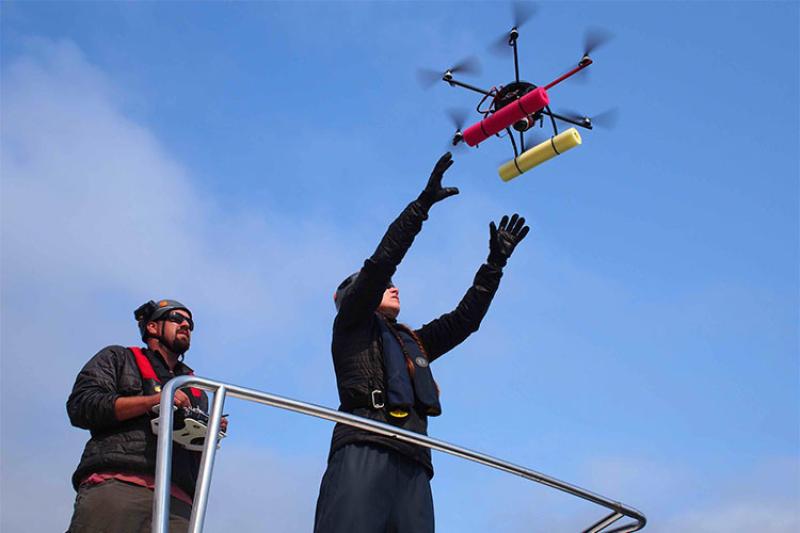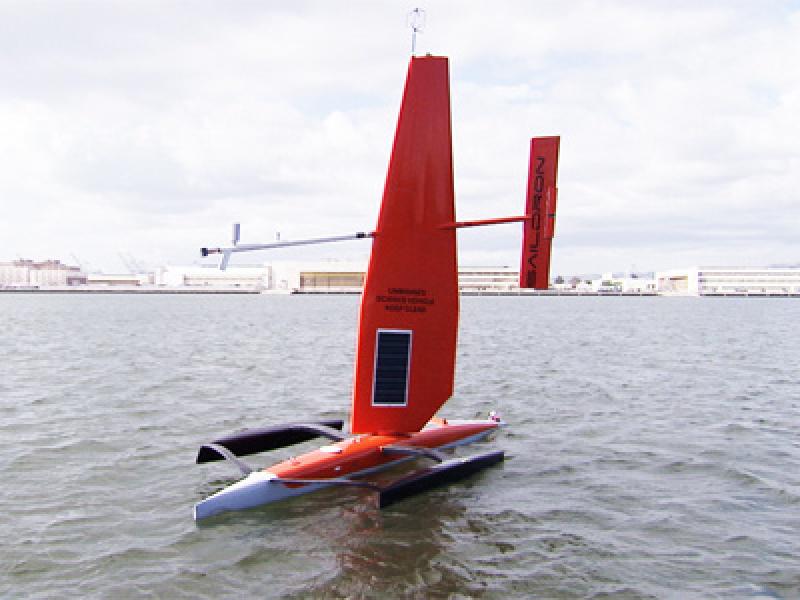Advancements in technology improve how our scientists collect data, which in turn, helps us make the most informed conservation and management decisions. Join us for #TechnologyWeek (November 6-10, 2017), as we take a closer look at how NOAA scientists use technology to better manage our fisheries, collect data, study endangered species, and explore the vast ocean.
Implementing Electronic Monitoring in Alaska Fisheries

Since 2000, Alaska has been at the forefront of a nationwide NOAA Fisheries effort to install electronic monitoring systems on fishing vessels. And in 2018, the next phase of their electronic monitoring program will be implemented, focusing on vessels roughly 40 to 60 feet in length.
Read this Q&A to learn more about electronic monitoring in Alaska
NOAA Buoys Help Fishermen Strategize in Real Time

In this age of open data, a wealth of up-to-date and user-friendly information is just a few clicks away. But what does this digital revolution mean for U.S. fisheries? In the Chesapeake Bay, NOAA Fisheries buoys help marine scientists, fishermen, and others to better manage, protect, and enjoy the Bay’s marine resources.
Learn more about Chesapeake Bay buoys
High Tech on the High Seas

The Hawaiian Islands Cetacean and Ecosystem Assessment Survey is six-month mission to survey whales, dolphins, and seabirds around the Hawaiian Archipelago. The goal is to estimate numbers of whales and dolphins in Hawaiian waters, examine their population structures, and better understand their habitats.
Learn more about the HICEAS survey
Saildrones: Cutting Edge Technology for Ocean Research

See how scientists use saildrones—autonomous sailing vessels with customized acoustic technologies—to study whales, fish, and seals in remote parts of the ocean.
Watch saildrone technology in action
Underwater Camera Technology Improves Pacific Islands Population Assessments

NOAA Fisheries scientists are pairing underwater camera technology with bait bags to improve assessments of reef fish and shark populations across the Hawaiian archipelago.
Learn how cameras are changing the way we conduct surveys in Hawaii
Fisheries Data Collection through the Years

Fisheries data collection has evolved considerably in the past 50 years. From notes on a clipboard to conveyor belts that help sort fish, take a look at how technology has transformed fisheries sampling on the high seas.
Learn how fisheries data collection has evolved through the years
Capitalizing on Technology to Reduce Bycatch

Bycatch occurs when fishermen discard catch of marine species, or when resources like marine mammals, seabirds, corals, sponges, sea turtles or protected fish are harmed or killed by fishing gear. In Fiscal Year 2014, NOAA Fisheries awarded $2.41 million for 18 bycatch reduction projects.
Learn more about innovative technologies used to reduce bycatch
LED Technology Lights the Way for Chinook Salmon

The development of efficient, cost-effective light-emitting diode (LED) technology has led to a growing list of innovative residential and industrial applications. A study by the Pacific States Marine Fisheries Commission and the Northwest Fisheries Science Center shows that LEDs are very effective in directing Chinook salmon to escape windows in Pacific hake trawl nets.
Learn more about how LEDs can play an important role in productive and sustainable fisheries
Underwater Cameras Aid in Aquaculture Research

The NOAA Fisheries Milford Laboratory is a global leader in aquaculture research and this year researchers are using cutting-edge technology to study the interactions between oyster farm gear and wild species.
Learn how new technology examines oyster aquaculture ecological services
Sonar Technology Tracks Sturgeon

The NOAA Chesapeake Bay Office recently did some work mapping critical habitat for endangered Atlantic sturgeon in Virginia. This sonar work and habitat analysis in the Nanticoke River and Marshyhope Creek, MD helped develop the sturgeon Final Rule, which indicates where critical habitat for sturgeon is located in those areas.
Learn more about how scientists are using sonar technology
Dive into Technology Videos
Watch these videos to see how NOAA scientists use different types of technology to study endangered species like sea turtles, explore deep-sea coral habitat, and even to aide in the management of shark populations.




